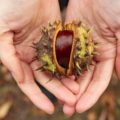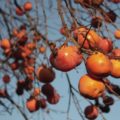“A scattered mist, one of those that distinguish the summer of Saint Martin, enveloping everything.”
Edgar Allan Poe
Saint Martin still be one of the most popular saints in Italy, the first no martyr to be recognized by the Church.
He born in 317 in Sibaria, the current Hungary, and he was named Martin in honor of Mars, the God of War. The father was in fact determined in the military career of the son: he was only 15 years old when he took an oath and he became Circitor, that is night patrol and inspection of the guard posts. And it was during one of these winter patrols that Martin met a poor undressed man to whom he gave half of his cloak without hesitation. It is said that the word chapel comes from the small sacred building where that same cloak was kept (cappa in Italian).
Around his 40 years old he decided to become monk leaving the army and dreaming the conversion of his parents. He did it with his mother, but he could move the father who stayed pagan committed.
In 371 he became bishop of Tours, where nowadays are venerated the relics escaped the fire caused by the Huguenots in 1562.
Saint Martin is the protector of hoteliers, foot soldiers, strangers, knights, majolica makers, soldiers, beggars, hosts, harvesters, winegrowers, tailors, leftovers and geese. This in addition to be known as the “Saint of cuckolded” as Mars, from whom he took the name, was the lover of Venus, in her turn wife of Volcano. This last punished them by locking them in an iron net, but the other gods mocked him instead of supporting him. Hence probably the Italian saying “cornuto e mazziato” (cuckolded and hit). Lot of celebrations are organized on the 11th of November and their object is often a horned (same word than cuckolded in Italian) animals (cows, goats, bulls,…): by association Saint Martin is therefore ironically the protector of the lovers with “the horns”. The most famous among these is for sure the one of San Valentino in Abruzzo Citeriore: on the 10th of November men parade through the streets among the cries of their fellow countrymen and the next day the festival goes on with the traditional fair and tasting of chestnuts and new wine.
This festival is in fact often associated to the maturation of the new wine that is enjoyed accompanying with roasted chestnuts or soaking in the Sicilian biscuits of Saint Martin: very dry and hard flavored with fennel seeds or anise.
In our beloved Veneto children armed with pots, lids and ladles, traditionally used to invade the streets of the city asking for sweets and humming the traditional rhyme. Venice, in this occasion, used to prepare the traditional cake of Saint Martin and they still do it: short crust pastry shaped like the Saint on horseback with sword and cloak, garnished with colored icing, pralines, candies and chocolates.
We waut for you at the AbanoRitz to taste the new wine of our hills cause as we say: : “A San Martin el mosto deventa vin” (At Saint Martin the mjust become wine) or again “A San Martin, castagne e vin” (At Saint Martin chestnuts and wine).
What are you waiting for?










